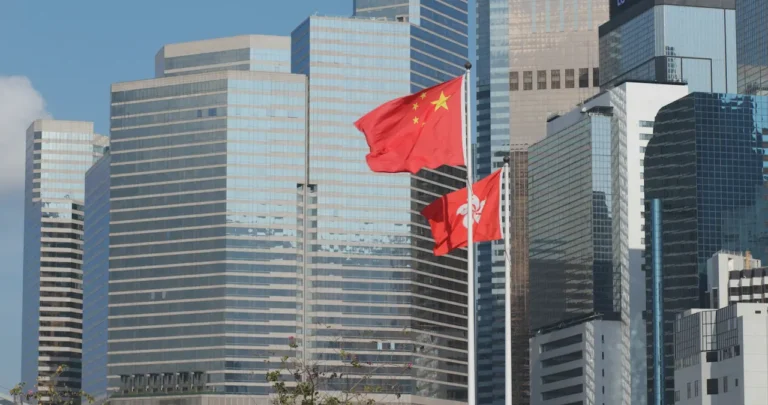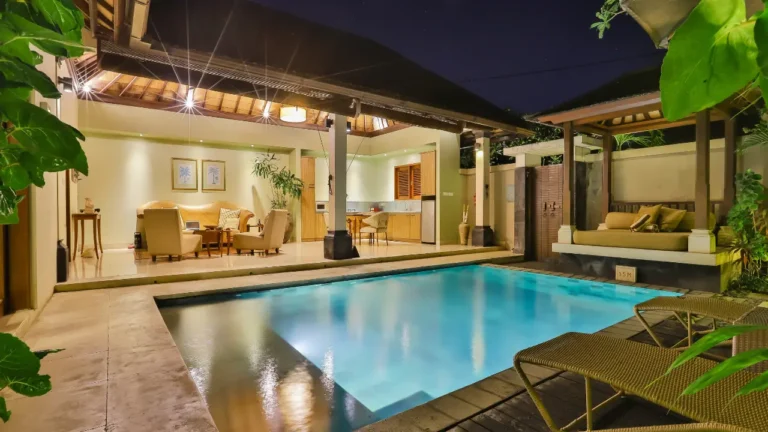Table of Contents
ToggleIn 2005, I jumped in a plane to start my journey to Southeast Asia and a ticket to Bali, an island that promised to be a haven of culture and natural beauty. At the time, my knowledge of this distant island was pieced together through documentaries and the vivid stories of the Lonely Planet, as Instagram and social media had not yet shrunk the world.
Two places stood out for an authentic Balinese experience: Uluwatu, with its majestic temple perched on a cliff overlooking the Indian Ocean, and Ubud, the cultural heart of Bali, nestled among verdant rice paddies—now a focal point for the property investment trend in Ubud. Back then, Bukit Peninsula, south of Bali, was a sparsely populated area with early signs of development like Pecatu and Dreamland Beach. However, Ubud was already a celebrated hub for its art galleries and rejuvenating spas, the epicenter of Balinese culture as I had imagined it.
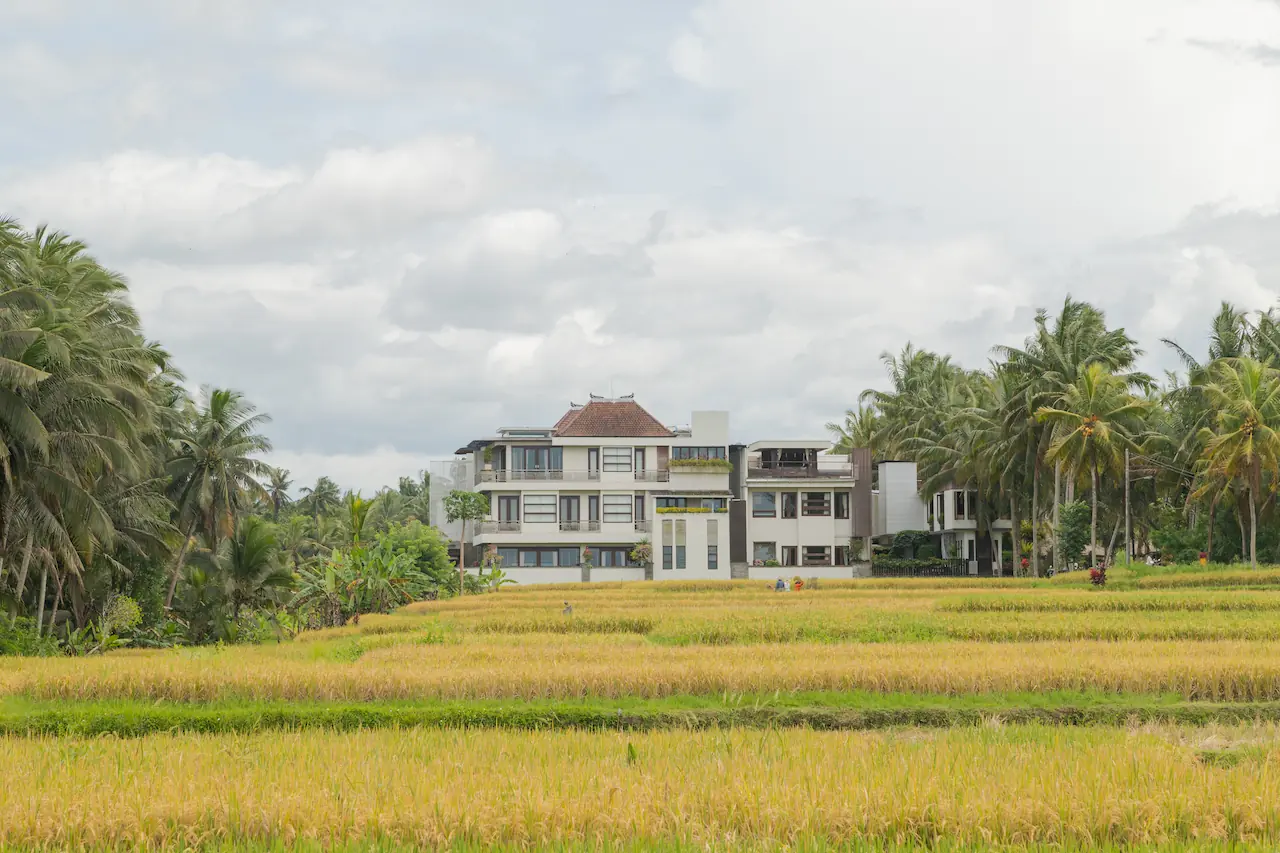
UBUD the essence of Balinese culture
Fourteen years have flown by since that initial voyage, and the landscape of Bali has undergone profound changes. The island has become a magnet for investors and tourists from every corner of the globe. Amidst this transformation, while places like Canggu, Kuta, and Seminyak have seen fluctuating reputations, often swayed by the fleeting whims of influencers, Uluwatu and Ubud have risen above, now leading in terms of occupancy rates.
Despite the chatter among expats and long-term visitors willing to stay now in Uluwatu, my intrigue was drawn towards Ubud. I wanted to delve into why it had become an increasingly popular choice for investment and we had to deal more and more investments there. My recent time in Ubud revealed a bustling town with tourists from India, Europe, America, and Korea. It wasn’t just a matter of numbers or client interest; Ubud radiated a magnetism that drew people from all over the world.
Make navigating real estate in Indonesia easy
Save time and money by letting ILA’s team of experts guide your real estate journey in Indonesia. We can help with due diligence, land title transfers, notary services, contract drafting and reviewing, building permits, various licences and more.
Find more information about our broad range of real estate services, or reach out today for a free consultation.
Ubud as an investment place
Ubud has indeed been the last few years the place for Yoga, wellness and other mystical trends. Despite the trends, it seems that Ubud is this place magneting anybody to visit once in their trip. I was talking to a developer recently who also had the same understanding. Everybody includes UBUD on its list. People might choose to stay in Seminyak one night OR in Canggu but UBUD is always combined in the trip while other areas are an option. UBUD is not an option in a trip and it is a MUST. By correlation the occupancy rate makes UBUD a stable investment place in terms of recurring revenue. Additionally, the property investment trend in Ubud is becoming increasingly significant, as the area’s popularity continues to grow.
Read Also: Bali and Lombok Investment Trend for 2025
The essence of travel has evolved. Visitors from hubs like Frankfurt, Paris, London, Delhi, or LA are not traversing the globe to stay in a small apartment. They seek an escape, an experience that transcends the ordinary. While some developers have eyed apartments as a lucrative venture, the true essence of travel lies in its ability to offer an escape from the day to day, a gateway to new experiences. Influencers may flock to Seminyak’s beaches for the perfect picture or story, but the majority of travelers yearn for tranquility and a chance to rejuvenate their souls amidst nature.
As an expat, when family or friends visit us, Ubud is invariably on the showcase list, often bypassing places like Sanur, Nusa Dua, or Kuta. The reason? Ubud has managed to preserve its essence. No place remains frozen in time, untouched by the years, but some manage to retain their core identity amidst the change.
Maximizing Rental Yields in Ubud: A Strategic Guide for Investors
Ubud appears to be a secured market for property investors. From the 80’s to today the market has shown is attractivity and maintained a stable occupancy rate through the decades. While some markets can provide a high and fast ROI yield, Ubud is providing a secured and long term investment with a high ROI. The property investment trend in Ubud underscores this stability, making it an appealing choice for investors. Travelers from countries such as India are also now spending vacation and honeymoon there assuring a continuity of the attractivity of Ubud while some places like Canggu start to have their attractions in question through some travelers.
Read Also: Navigating Bali’s Property Maze – A Comprehensive Guide for Savvy Investors
How to optimize your return on investment in Ubud?
Tourists moving to Ubud are expecting to find the heritage of the balinese culture and staying in a place pervaded by the balinese culture with a touch of modernity. The recents development of some properties in Bali have shown that the most successful projects are the one maintaining the essence of Bali. The property investment trend in Ubud reflects this, as investors are increasingly drawn to the area’s unique cultural appeal and potential for high returns. Expecting a ROI of 15% on an investment in Ubud is reasonable, especially by developing a sustainable villa including materials and decoration in harmony with the environment of Ubud.
How this trend will be in 2025?
Ubud continues to be at the top of the property investment destination list in 2025, combining cultural charm and natural beauty with an ever-growing demand. With its serene rice fields, vibrant arts scene, and wellness retreats, Ubud offers a haven for tourists, long-term residents, and digital nomads alike, ideal for rental properties and boutique developments. While Ubud doesn’t yet bring in as much money per listing as Seminyak does, its lower initial investment costs and consistently higher revenue year over year make it a promising choice for long-term growth.
A notable trend shaping Ubud’s property market this year is the rise of eco-conscious developments. Sustainable villas and green-certified properties are gaining popularity, appealing to environmentally aware travelers and offering higher returns as demand for eco-friendly accommodations grows. Coupled with Ubud’s stable occupancy rates and its unique position as the heart of Bali’s cultural and spiritual life, the area continues to offer lucrative opportunities for investors seeking a balance of affordability and profitability.
Occupancy rate in Ubud
Average Occupancy rate in UBUD on Airbnb
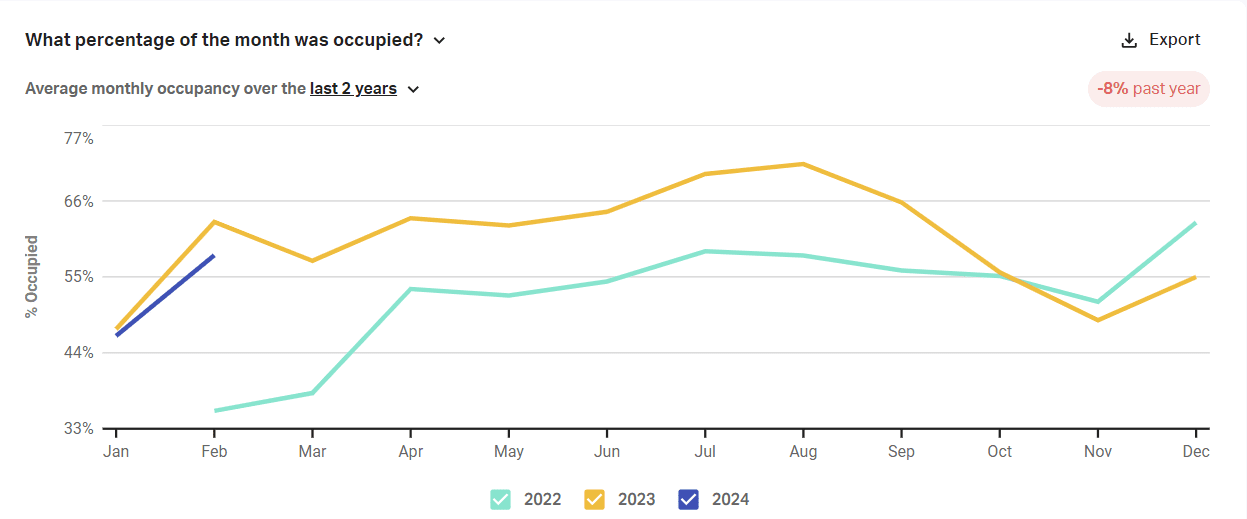
Average Revenue per listing in USD in UBUD on Airbnb
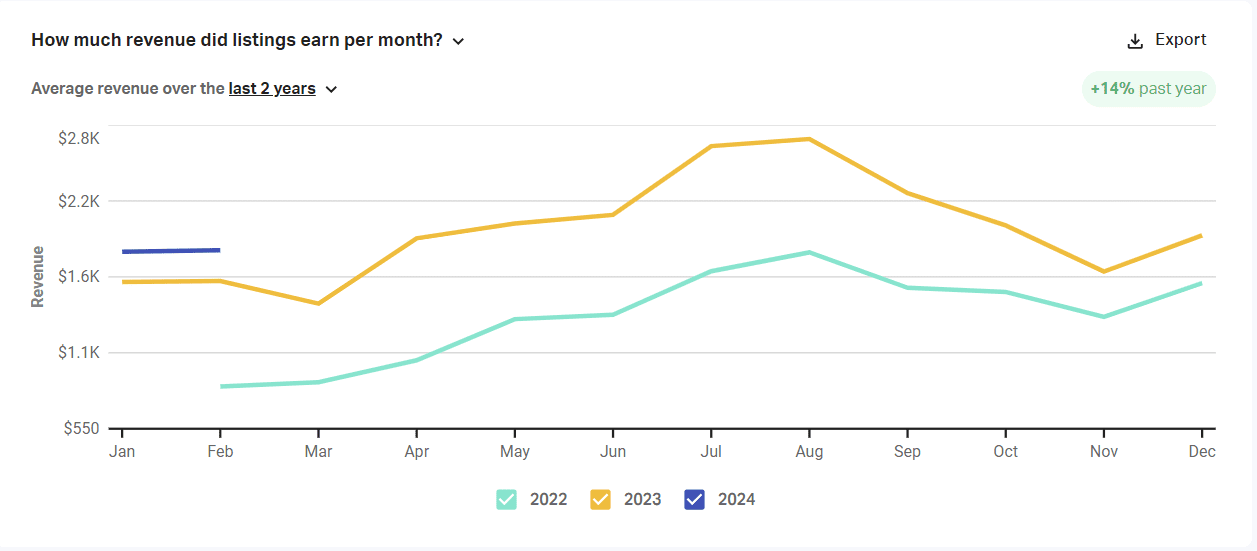
The trends and numbers paint a clear picture, but Ubud’s charm transcends data. It offers a piece of its soul to every traveler who wanders its streets and rice fields by walking, motorbike or cars. Ubud remains a testament to the enduring appeal of places that manage to balance growth with the preservation of their cultural and natural heritage. It stands as a beacon for sustainable tourism, where development and tradition harmoniously coexist. In a world that’s constantly changing.
Read Also : Is Bali a Bubble About to Explode?
Ubud offers a sense of stability, showcasing the timeless beauty and cultural richness that travel reveals. This isn’t just a perception—the data below highlights that Ubud remains a vital part of Bali, holding a special place in the hearts of travelers. My hope is for Ubud to retain its essence for at least another 14 years.
The statistics clearly show that while Seminyak generates higher average revenue per listing, the initial investment in Ubud is often half or even a third of the cost of properties in Seminyak or southern Bali. Notably, Ubud is already outperforming last year’s revenue, while other areas, except Seminyak, are still lagging behind both in occupancy rates and revenue.
Average Occupancy rate in Seminyak on Airbnb 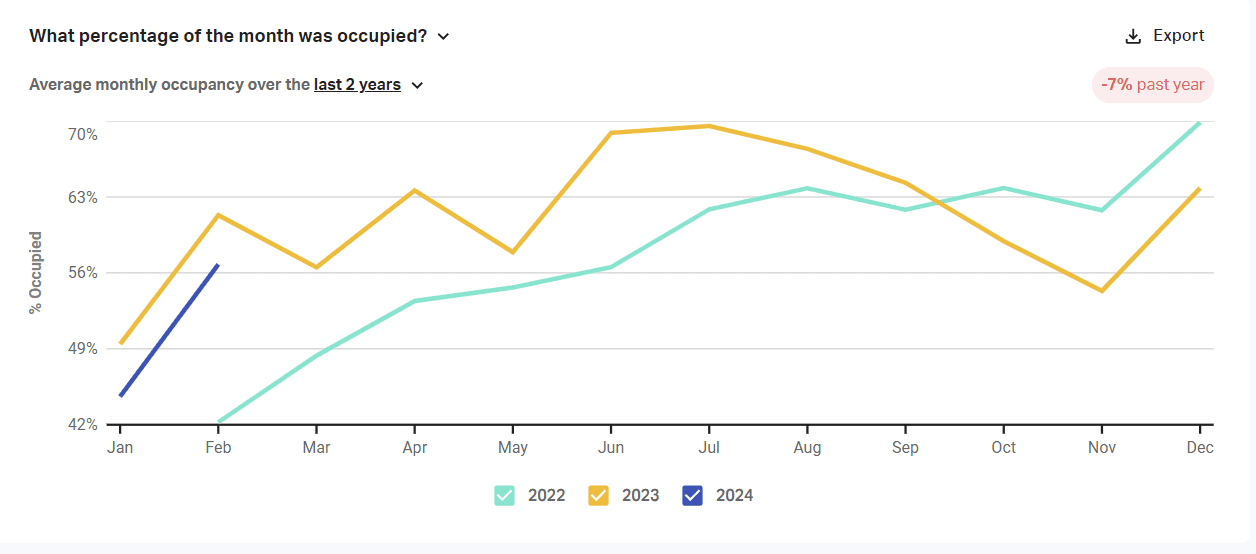 Source AirDNA
Source AirDNA
Average Revenue per listing in USD in Seminyak on Airbnb
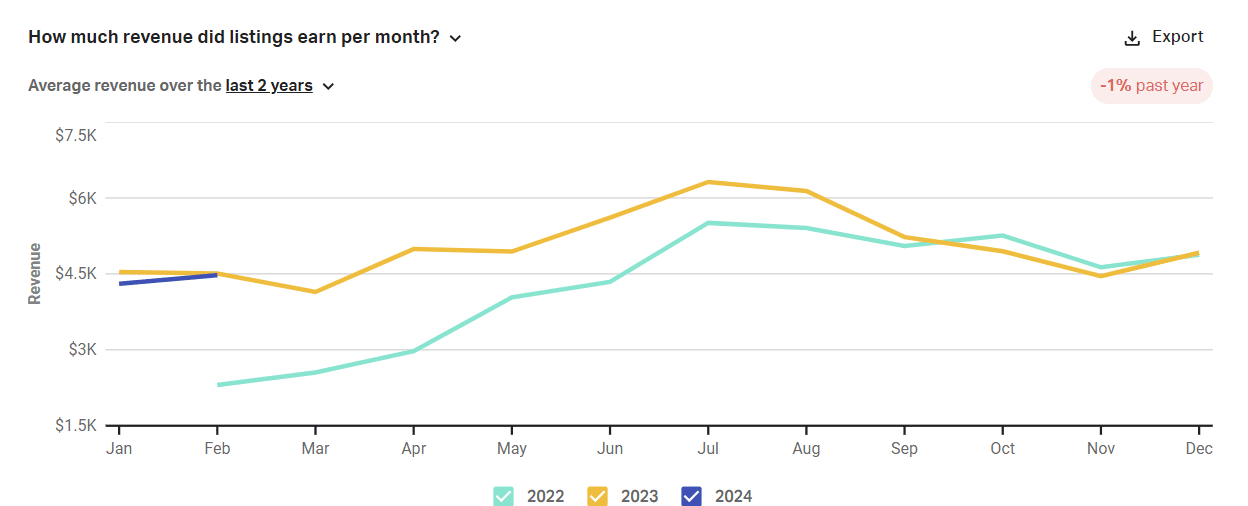
Contact us if you want to know more about investment in Ubud Bali.

















